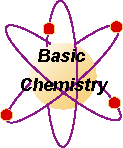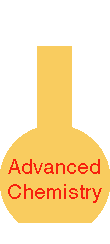Boiling Point
PURPOSE:
You will determine the boiling point of water and various solutions and correct the data to standard conditions of temperature and pressure (STP). To start this experiment you must first calibrate a thermometer. After that various chemicals are used to determine the boiling point of their solutions.
MATERIALS:
- You will be making 2 M solutions for the following chemicals. Common sugar 64 g in 100 ml water OR
table salt (NaCl) 11.6 g in 100 ml water OR iron 3 sulfate 80 g in 100 ml water OR aluminium chloride 26.7 g in 100 ml water.
- Boil water vigorously and take the temperature without touching the sides or bottom of the container. You must read the thermometer while it is in the boiling water.
- Boil each of the solutions separately and record their temperatures as you did in step 2. After they cool down check the volume so you can make corrections based on the molarity.
RESULTS:
- List the chemicals in order from the one that raised the temperature the least to the one that had the greatest effect. Next to the chemicals put the number of degrees difference compared with the original boiling point of water.
- Is there an approximate whole number ratio of temperature between the chemicals?
- Relate the whole number ratio to the ionic equations that apply.
- Check the Handbook of Chemistry and Physics or some other source to see if your results agree with the expected values for boiling point elevation. After correcting your boiling points for STP and molarity, determine the percent error.
Back to top
RESULTS:
- List the chemicals in order from the one that raised the temperature the least to the one that had the greatest effect. Next to the chemicals put the number of degrees difference compared with the original boiling point of water.
- Is there an approximate whole number ratio of temperature between the chemicals?
- Relate the whole number ratio to the ionic equations that apply.
- Check the Handbook of Chemistry and Physics or some other source to see if your results agree with the expected values for boiling point elevation. After correcting your boiling points for STP and molarity, determine the percent error.
Back to top


